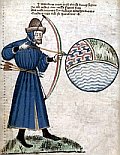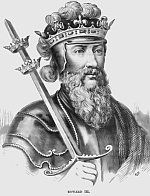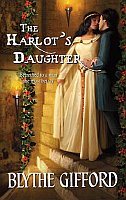HISTORICAL
ROMANCE |
MEDIEVAL
ROMANCE |
|

|
|

John Gower and the world as depicted in Medieval times (from the Vox
Clamantis)
|

The Order of the Garter was formed by Edward III, perhaps in imitation
of King Arthur’s Knights of the Round Table.
|

King Edward III
|
|
|
BOOK
ILLUMINATIONS
From Medieval Book Reviews
HOME
ROMANCE
FICTION SUSPENSE & THRILLERS
MYSTERY
AUTHORS REVIEWER
PROFILES
|
The Harlot's Daughter

by Blythe Gifford

What is
truth? Power, Law or Love?
King Edward III called Lady Solay
daughter. Today, the whispering and mocking court of King Richard calls
her the harlot’s daughter. Once banished from court, Lady Solay now
returns to court in an attempt to curry and money. Her mother Alys, the
former mistress of the late King, coaxes her daughter in the ways of
seduction and how to win favors from kings. The disgraced Alys knows
her daughter's success at court remains the only hope for her family's
economic survival. Despite the murmurs, Solay holds her head high. She
must focus on the king, the supreme power and law of the land. Her
family depends on her.
Lord Justin Lamont, a lawyer, works with the Council and the Duke of
Gloucester in an attempt to reign in the power of the king and prevent
the misuse of Treasury money for extravagant favors. For him, Solay
represents all the extravagance, corruption and debauchery rampant in
the court and yet her beauty and spirit attract him. Can she protect
King Richard by spying on Lord Justin’s plans while showering him with
her attentions? Has she learned her mother’s lessons well enough to
please both Lord Justin and King Richard? In an effort to control the
treasury from the King’s decadence, Lord Justin must keep a careful eye
on all those seeking the King’s favor. Threatened by each other’s
political roles, they are forced together by the King, promised oaths
and bargains. Justin and Solay find much more is at risk as they are
drawn together in a risky dance of secrets, politics and law --- their
hearts. When King and Council war with one another for ultimate power,
can Justin and Solay’s growing love for one another protect them from
all the conflicts or will they be forced to turn against each other in
a bid for personal safety and ideals?
In The Harlot’s Daughter,
Blythe Gifford’s imagination opens a window into the details of
medieval history, blending details from historical and literary records
with fictional characters whose romance makes history come alive for
the modern reader. Based on Joan the daughter of Alice Perrers the
infamous mistress of King Edward III, Lady Solay’s encounters and
conversations with Lord Justin reveal riveting philosophical questions
underlying the Parliament’s action to place the King under the control
of the Council of Lords Appellant. What is truth? Is truth based on
power or law? Can absolute power ever achieve justice? How does justice
apply to those motivated by need as compared to an ideal? Does
compassion supercede the law? Can an individual medieval woman receive
justice or compassion from king, the law or love? Pitted against each
other by their opposing ideals and needs, yet drawn to each other by
love growing more passionate, can Solay and Justin reveal their ideals
and secret vulnerabilities? If so, what are the ramifications for them
and the court?
Blythe Gifford’s medieval historical romance is grounded in both
medieval history and literary traditions from the larger plot elements
to the finest details. Medieval enthusiasts will find a special delight
in the marriage conditions such as the one Justin places on Lady Solay
with the reminiscences of medieval tales (see The Wedding of Sir Gawain and Dame Ragnell
as well as the versions of the "Tale of Florent" told by John Gower’s Confessio Amantis and Chaucer’s
"Wife of Bath’s Tale."), yet transformed by setting this convention
within the context of a concrete historical event and the romance
genre. True to history and literature, John Gower makes an appearance
at Richard’s court. Even more fine in detail than the time setting of
the liturgical calendar, a minor character is mentioned as reading a
book to create a contrast to Lady Solay‘s temperament and interest in
astrology. Medieval enthusiasts will remember that William Caxton
brought the printing press to England at a date later than the time
frame encompassed by this book and therefore books, as we think of
them, were rare, expensive and likely to have originated from the
court. To the reader’s delight, even this most minute detail echoes the
suspense and literary themes of the romance! Blythe Gifford‘s The Harlot’s Daughter romance
easily transports the reader into the time and the romance and yet this
is a romance that Medieval enthusiasts might choose to keep on their
shelves and reread ---- this is a romance that continues to give and
delight after the first reading!
Publisher: Harlequin Historical
(October 2007)
Reviewed by Merrimon,
Medieval Book Reviews

|
|
|